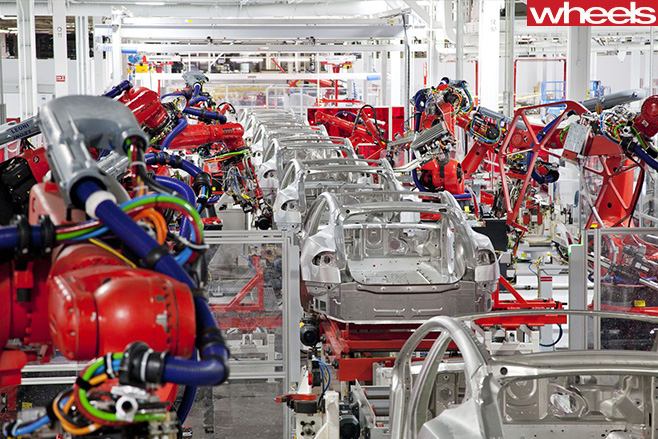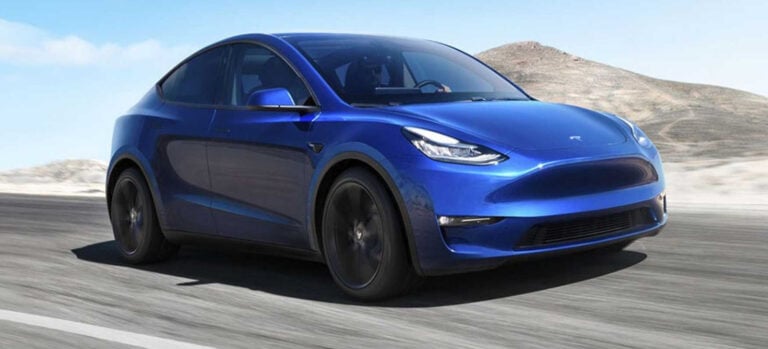The global car industry is facing a production crisis due to the shortage of semi-conductor chips, which are needed in just about every electronic device on the planet.
It’s wreaking havoc on vehicle supply chains, leading to instances like the thousands of new Ford F-Series pick-ups parked in limbo at Kentucky Speedway, almost complete but missing crucial electronic components.
So how did we get here?
New cars can require thousands of these chips, but when COVID-19 outbreaks shut down automotive factories in 2020, carmakers cancelled semi-conductor chip orders expecting not to need them.
The tech industry, fuelled by a shift towards home life, absorbed that chip supply. Lockdowns ended, and the demand for cars skyrocketed – but there were far too few chips to meet it.
Globally up to mid-2021, the car industry has suffered to the tune of more than €90 billion (AU$141bn) according to research firm AlixPartners.
In Australia, the local industry is feeling the effects of overseas delays, and waiting times for some vehicles have ballooned to many months as demand for new cars has increased in the wake of global lockdowns lifting.

Wheels understands the situation to be more severe than many insiders will admit. Behind the scenes, industry experts say companies are battening down the hatches for a lag in vehicle deliveries well into 2022, anticipating the effects will likely be felt even through 2023.
Nissan, for example, recently reported a record annual loss of more than 150 billion yen, or almost AU$1.8bn, due to the pandemic and chip shortage. The company had to suspend production at three plants in Mexico, and many other brands have responded in a similar way – including recently formed group Stellantis.
For weeks, Ford was estimated to be operating at 50 per cent capacity globally. Its European plants have been producing vehicles such as the Transit, Fiesta and Puma at far reduced rates.
But locally, companies are maintaining their brands are able to handle what might come, telling Wheels this is a challenge – not a disaster. While Australia’s geographical isolation means accessing products from overseas can take more time, brands here are used to planning ahead.
Toyota Australia’s sales VP Sean Hanley announced the brand is less affected by the shortage than others, however a spokesperson told Wheels: “Demand for new vehicles, globally and in Australia, is recovering much faster than anticipated just a few months ago. Although our plants are increasing capacity, we are anticipating that wait times for high-demand models will be longer than usual in the coming months.”

While it might sound like ‘PR talk’, it aligns with a point made by Harvard professor Willy Shih, who is an expert on semi-conductors and supply chains, during an interview with The Verge’s Decoder podcast.
He says car companies are now looking to be more closely interlinked with the firms which manufacture semi-conductors and microelectronics.
“From what has historically been a very transactional and punitive relationship with suppliers [has changed] to a strategic and a partnership relationship with suppliers,” Shih said.
“Toyota has always had that approach, and they have fared much better in the pandemic.”

But the global supply of semi-conductor chips is incredibly difficult to increase quickly, with electronics companies like Japan’s Hitachi only just now being able to commence upgrading its capacity to manufacture chips in the US – a task it estimates won’t be complete until August 2022.
The US will also see the Government pour US$50 billion (AU$67.8bn) into “restoring American leadership in semi-conductor manufacturing” – though this funding rollout won’t be complete until 2026. In Asia and Europe, similar endeavours are being made to improve availability.
Shih, in the same interview, said he thinks the problem will persist in some capacity for a long time to come.
“It’s not going to be like the tape breaks at the finish line, and there’s a clear ending to this thing. Rather, it’s going to be that some sectors are going to get better sooner than others.
“When are we going to stop talking about it because the problem is not as severe? I think it’s going to be the middle of next year.”

For now, some premium car manufacturers have even removed the availability for optional top-tier comfort and advanced safety tech due to the shortage.
The problem isn’t going away, and it seems set to get worse before it gets better. Earlier this year, the same firm that calculated the €90bn figure (impact suffered by the car industry) estimated 2021’s global vehicle output would be down by about 2.2 million. That estimation has since been revised to closer to four million.
What are semi-conductors?
A set of electronic circuits built on a wafer of the semi-conductor material silicon. Chips or integrated circuits (ICs) can range from a simple circuit to a micro-computer.
They allow the design of circuits many, many times smaller, more powerful and less costly than if they were built from individual electronic components, and make all the complex and powerful electronic systems in today’s cars possible.
We recommend
-
 News
NewsJeep steady through semi-conductor shortage by revising options list
Company says it is affected – but not as badly as it could have been
-
 News
NewsHyundai confirms semi-conductor supply hasn't impacted Staria features
Chip shortage hasn't dictated standard equipment on new people mover
-
 News
NewsSemi-conductor shortage forces Tesla to pause Chinese Model Y production
World's biggest EV maker starts suffer from chip supply





